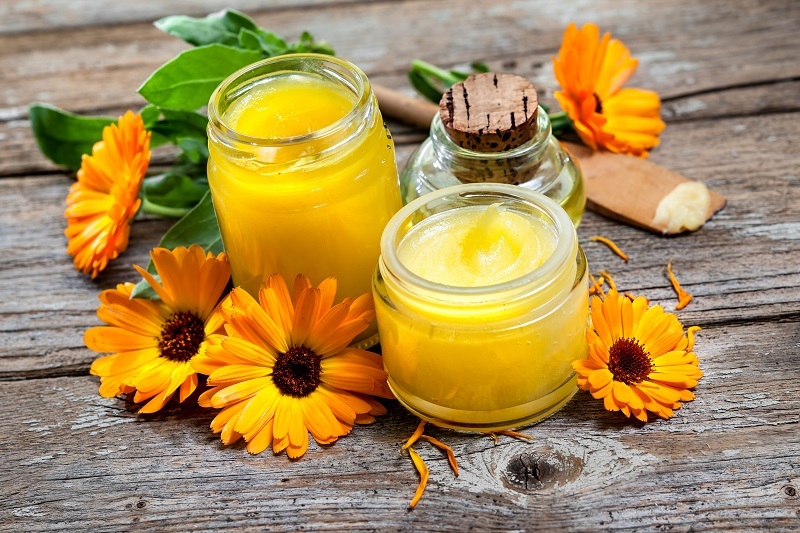Orchid Care Techniques for Vibrant Plant Health
Posted on 22/08/2025
Orchid Care Techniques for Vibrant Plant Health
Renowned for their exquisite beauty and surprising diversity, orchids have long enchanted plant enthusiasts and casual gardeners alike. Yet, the prospect of caring for these elegant blooms is often shrouded in mystery, as orchids are reputed to be finicky and difficult. In reality, mastering orchid care techniques is very achievable--and with a comprehensive understanding, anyone can cultivate vibrant, healthy orchids that thrive year-round. This article explores the key elements and expert tips for successful orchid care, from basic requirements to advanced maintenance.

Understanding Orchids: The Foundation of Care
Before delving into detailed orchid plant care strategies, it's vital to appreciate their unique biological features:
- Diverse species: Orchids number in the tens of thousands, with Phalaenopsis, Dendrobium, Cattleya, and Oncidium among the most popular for growing at home.
- Epiphytic habitats: Many orchids naturally grow attached to trees rather than in soil, absorbing moisture and nutrients from the air and surrounding debris.
- Sensitive root systems: Their roots often dislike compacted growth media and require excellent airflow.
Understanding these traits is essential for designing an effective orchid care regimen that promotes optimal plant health and brilliant blooms.
Key Elements of Orchid Care for Robust Growth
Choosing the Right Environment
The appropriate environment is central to successful orchid growing:
- Light: Orchids typically require bright, indirect sunlight. Direct rays, especially midday, can scorch their leaves. Position them near an east or south-facing window, filtered with a sheer curtain.
- Temperature: Most species flourish with daytime temperatures of 65-80°F (18-27°C) and nighttime lows of 55-65°F (13-18°C).
- Humidity: Orchids appreciate 40%-60% humidity. In dry climates or heated spaces, place a humidity tray or room humidifier nearby.
Optimal Watering Practices
Watering orchids is one of the most misunderstood aspects of orchid maintenance. Overwatering is the most common cause of poor health and root rot. Here are essential watering guidelines:
- Frequency: Let the growing medium partially dry between waterings. This typically means every 5-12 days, varying by pot type and environmental conditions.
- Method: Water thoroughly, allowing excess fluid to drain completely. Never let an orchid sit in standing water.
- Water type: Room-temperature rainwater or distilled water is ideal. Avoid softened water, as its high sodium is harmful.
Pro tip: Insert a wooden skewer into the potting mix--if it emerges dry, it's time to water!
Proper Orchid Fertilization Techniques
To achieve those vivid orchid flowers, balanced nutrition is a must:
- Type of fertilizer: Use a balanced, water-soluble fertilizer (20-20-20 or specific orchid formulas). Dilute to half or a quarter of the recommended strength.
- Feeding schedule: Fertilize every 2-4 weeks during active growth (spring and summer), reducing to once a month or halting during dormancy in winter.
- Flush regularly: Occasionally run plain water through the pot to leach out excess fertilizer salts, which can damage roots.
Remember the phrase, "weakly, weekly," for fertilizing orchids--too much fertilizer can do more harm than good.
Airflow and Ventilation
Orchid roots thrive with ample oxygen. Create gentle air movement using:
- Fans: Oscillating fans on low settings near, but not directly at, your orchids.
- Strategic placement: Avoid cramped arrangements, which limit airflow and invite disease.
Proper air circulation reduces the risk of fungal and bacterial diseases, keeping orchids healthy and vibrant.
Repotting for Continued Health
Repotting is crucial for orchid vitality, typically every 1-2 years. Key signs your orchid needs repotting include:
- Decomposed medium: Breaking down of bark, moss, or other components that can suffocate roots.
- Crowded roots: Roots spilling over the pot's edge or circling densely inside.
Repotting steps:
- Gently remove the orchid from its container, taking care not to damage roots.
- Trim any dead or mushy roots with sterile scissors.
- Position the plant in fresh, well-draining orchid mix (bark, perlite, or sphagnum moss blends).
- Water sparingly for the first week to allow the orchid to acclimate.
Common Orchid Varieties and Their Specific Needs
Phalaenopsis (Moth Orchid)
- Favors constant, warm temperatures.
- Needs moderate, filtered light and high humidity.
- Water when the bark is dry; avoid letting water sit in the leaf crown.
Dendrobium
- Requires brighter light than Phalaenopsis.
- Enjoys a cool, dry rest period after flowering (especially deciduous types).
- Prone to root rot if overwatered--ensure excellent drainage.
Cattleya
- Prefers more intense light (2,000-3,000 foot-candles).
- Allow potting media to dry out between waterings.
- Needs frequent feeding during active growth seasons.
Orchid Blooming: Expert Tips for Long-lasting Flowers
Achieving and sustaining those glorious orchid blossoms is the reward for diligent care. To maximize blooms:
- Temperature management: Many orchids need a drop in nighttime temperature (about 10°F / 5°C) to initiate flowering.
- Proper photoperiod: Ensure they get 11-14 hours of light per day for consistent blooming, supplementing with artificial grow lights in winter if necessary.
- Do not disturb: Once flower spikes emerge, avoid moving the plant, which can stress the orchid and cause buds to drop.
Faded flowers? Trim the spike just above a node to encourage new branches or flowers, depending on the variety.
Preventing Orchid Pests and Diseases
Healthy orchids are less susceptible to pests and diseases, but vigilance is key. Here's how to protect your orchid plants:
Common Pests
- Mealybugs: Cottony white insects; remove with alcohol-dipped swabs and treat with insecticidal soap.
- Spider mites: Fine webbing under leaves; increase humidity and use miticides if infestations persist.
- Aphids and scale: Dislodge with water spray or treat with horticultural oils.
Fungal and Bacterial Problems
- Root rot: Caused by overly wet media--always ensure pots drain well.
- Leaf spots: Remove affected leaves and treat with fungicide; boost airflow to reduce recurrence.
Sterilize cutting tools before pruning or repotting to prevent disease spread.

Advanced Orchid Care Techniques
Ready to take your orchid care skills to the next level? Consider these strategies:
- Orchid propagation: Experienced growers divide mature plants, harvest keikis (baby plants from nodes), or even nurture orchids from seed for new growth.
- Specialty potting: Mounted orchids on cork or tree-fern slabs recreate natural epiphytic conditions. Mist daily and increase humidity for best results.
- Bloom boosters: Certain high-phosphorus fertilizers encourage spike initiation. Use with caution and always follow package directions.
Summary: Thriving Orchids All Year Round
Caring for orchids is both an art and a science. By providing suitable light, warmth, moisture, and nutrition, orchid enthusiasts can enjoy healthy plants with dazzling displays of color. Pay attention to the unique characteristics of your orchid variety, resist the temptation to overwater, and regularly inspect plants for pests or disease.
- Select appropriate orchid species for your space and lifestyle.
- Master watering and feeding schedules to prevent common mistakes.
- Repot and prune for vigorous, long-lived plants.
- Stay vigilant against pests and provide good air circulation.
With patience and dedication, anyone can transform their home, office, or greenhouse into a sanctuary of vivid orchid blooms. Making use of these proven orchid care techniques for vibrant plant health ensures your orchids not only survive, but flourish--delighting you with their unparalleled beauty for years to come.
Ready to begin--or elevate--your orchid growing journey? Start applying these tips today, and watch your plants radiate health and color like never before!
Latest Posts
Guide to Nurturing Your Cut Flowers for Longer Enjoyment
Orchid Care Techniques for Vibrant Plant Health
Unravel the enchanting facts about sunflowers you won't believe







